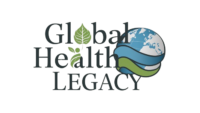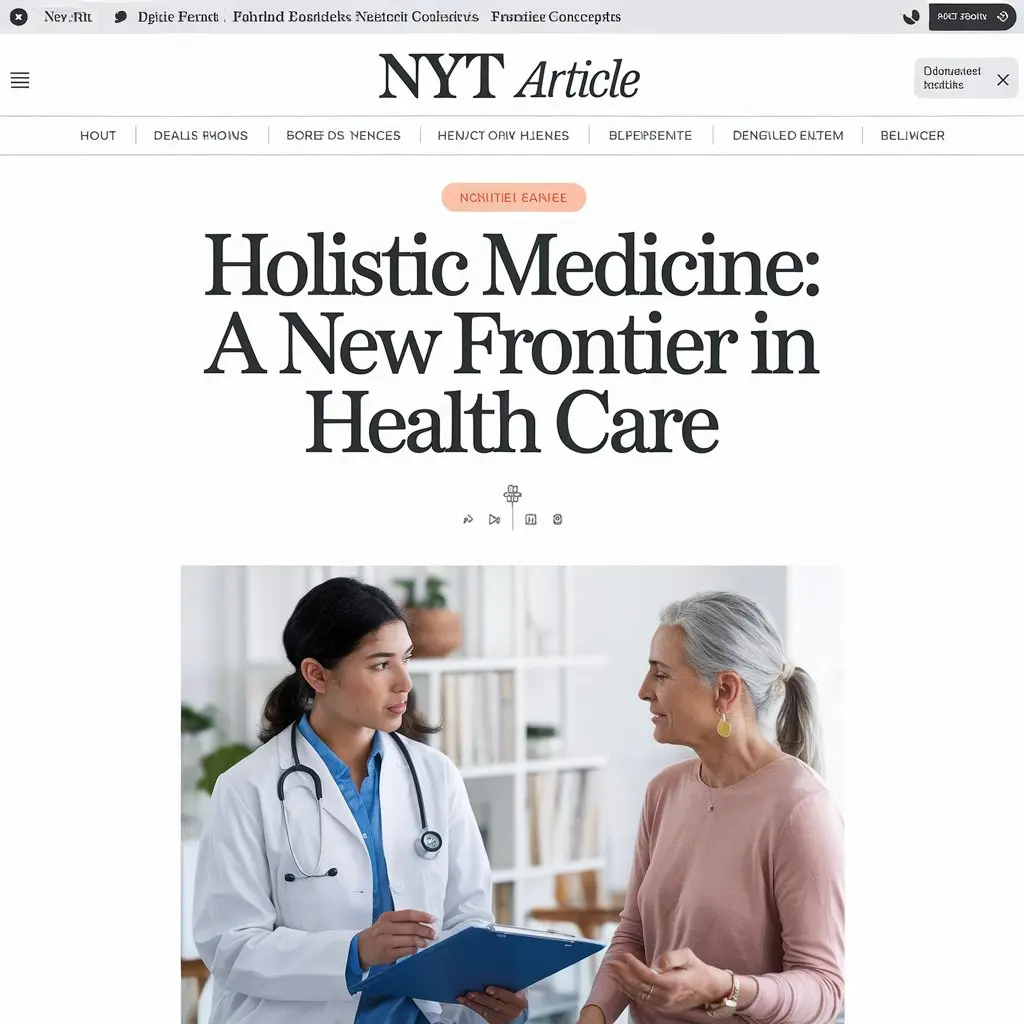Holistic medicine focuses on treating the whole person, not just the disease. This approach addresses physical, mental, emotional, and spiritual needs. As healthcare continues to evolve, holistic practices are becoming more mainstream. The New York Times (NYT) has covered various key concepts in holistic medicine, helping readers understand this broad and transformative approach to health.
Here, we explore essential holistic medicine concepts, offering insights into how this philosophy promotes well-being.
1. Mind-Body Connection
The mind-body connection is fundamental in holistic medicine. This concept suggests that the mind and body influence each other deeply. Thoughts and emotions can affect physical health, while physical conditions can impact mental wellness. Practices like meditation, mindfulness, and relaxation techniques aim to balance this connection.
NYT highlights the mind-body link, especially in managing stress-related disorders. Studies show that reducing stress can lower blood pressure, enhance immunity, and improve mood. The mind-body approach emphasizes that mental health is as crucial as physical health, promoting harmony between the two.
2. Personalized Treatment
Holistic medicine believes each person is unique. Practitioners often develop personalized treatment plans that reflect the individual’s lifestyle, genetics, and preferences. This approach contrasts with one-size-fits-all treatments often found in conventional medicine.
NYT has reported on how personalized medicine benefits patients. A tailored approach considers diet, exercise, environment, and emotional state, which may enhance treatment outcomes. This perspective is especially valuable for chronic conditions like diabetes, asthma, and arthritis, where lifestyle plays a major role.
3. Prevention Over Cure
Holistic medicine emphasizes prevention over cure. Instead of treating symptoms, it focuses on maintaining health to prevent illness. This preventive approach includes lifestyle changes, nutritional support, and stress management.
The NYT has noted that holistic practices encourage individuals to take proactive steps. This shift towards prevention can reduce healthcare costs and minimize reliance on medication. For example, adopting a balanced diet and regular exercise routine can help prevent obesity, diabetes, and heart disease.
4. Integrating Alternative Therapies
Holistic medicine integrates alternative therapies like acupuncture, herbal medicine, and chiropractic care with conventional treatments. This combination creates a comprehensive care approach, addressing diverse health issues.
The NYT has examined how these therapies complement conventional medicine. For instance, acupuncture may help alleviate pain, while herbal remedies can boost immunity. Integrating such practices broadens treatment options, allowing patients to find methods that best suit their needs.
5. Holistic Nutrition
Diet plays a crucial role in holistic health. Holistic nutrition focuses on eating whole, natural foods and avoiding processed products. This approach emphasizes nutrient-dense foods that nourish the body and support optimal functioning.
NYT articles often stress the importance of mindful eating, a concept central to holistic nutrition. Consuming foods rich in vitamins, minerals, and antioxidants supports the immune system and reduces inflammation. Holistic nutrition also encourages paying attention to food sources, such as organic or locally-grown options, to promote sustainability and health.
6. Emotional and Mental Health Focus
In holistic medicine, emotional well-being is as important as physical health. Emotional health involves understanding and processing emotions healthily. Practices like therapy, journaling, and support groups are often included in holistic care plans.
The NYT highlights the importance of emotional health, noting that unprocessed emotions can lead to physical health issues, like headaches or digestive problems. Holistic approaches encourage self-awareness and resilience, which help individuals manage emotional stress.
7. Energy Medicine
Energy medicine is based on the concept that energy fields flow through the body, and disruptions in these fields can cause illness. Techniques like Reiki, Qigong, and acupuncture focus on balancing this energy for health improvement.
NYT has covered energy healing and its effects. Though the scientific community has mixed opinions, many people report relief from pain and anxiety through these practices. Energy medicine provides a non-invasive option for those interested in alternative methods to improve wellness.
8. Connection to Nature
Holistic health promotes a connection to nature as a way to restore balance and wellness. This concept includes activities like walking in nature, gardening, or practicing outdoor yoga. Studies show that exposure to nature reduces stress, improves mood, and boosts immunity.
NYT has explored the health benefits of spending time in nature. Nature therapy can help combat anxiety and depression, offering a refreshing break from daily stressors. Embracing nature as part of a wellness routine aligns with holistic principles of harmony and balance.
9. Spiritual Health
Spiritual health, in holistic medicine, means finding purpose and meaning in life. It is not always religious but emphasizes inner peace and self-awareness. Spiritual practices like meditation, prayer, and mindfulness can improve resilience and mental clarity.
NYT often discusses spirituality’s role in well-being. People who feel connected to a larger purpose may experience less anxiety and a greater sense of fulfillment. Holistic medicine values spiritual health, considering it essential to overall wellness.
10. Self-Care Practices
Self-care is a core concept in holistic medicine. It encourages individuals to take time for activities that nourish their mind, body, and spirit. Self-care can be as simple as getting enough sleep, spending time with loved ones, or taking a warm bath.
The NYT emphasizes the importance of self-care for preventing burnout and enhancing happiness. Small, daily self-care actions can help people feel more balanced and reduce stress, promoting long-term wellness.
11. Holistic Approach to Chronic Pain
Holistic medicine offers alternative approaches for managing chronic pain. Techniques like acupuncture, massage therapy, and meditation can relieve pain without relying heavily on medications.
NYT has reported on the benefits of holistic approaches for chronic pain sufferers. These methods may reduce dependency on painkillers, which can have serious side effects. A holistic approach encourages exploring non-invasive ways to manage and relieve pain effectively.
12. Movement and Body Awareness
Movement, in holistic medicine, goes beyond exercise. It emphasizes mindful movement, which connects physical activity with awareness. Practices like yoga, tai chi, and dance encourage body awareness and improve flexibility, strength, and balance.
NYT often covers how mindful movement benefits both body and mind. These activities reduce stress, boost mood, and improve physical health. The focus on body awareness helps people develop a stronger connection with themselves, promoting a holistic sense of well-being.
13. Social Connection and Community
Holistic health values social connections as part of well-being. Positive relationships support mental health and contribute to a longer, healthier life. Community activities, support groups, and meaningful relationships foster belonging and reduce loneliness.
The NYT frequently highlights how social ties affect health. People with strong support networks often experience lower stress and improved resilience. Holistic medicine encourages building positive connections to support mental and emotional health.
14. Environmental Awareness
Holistic medicine extends health awareness to environmental factors. This concept emphasizes reducing exposure to toxins, using eco-friendly products, and advocating for a cleaner planet. Holistic health recognizes that a healthy environment directly impacts personal health.
The NYT often reports on environmental issues, stressing how pollution and toxins affect public health. Holistic practices encourage using natural, sustainable products and reducing chemical exposure, promoting a safer, cleaner living environment.
15. Empowering Patients
Empowerment is a key goal in holistic medicine. Patients are encouraged to take an active role in their health. This empowerment includes understanding treatment options, asking questions, and making informed choices.
NYT highlights the value of patient empowerment in achieving better health outcomes. When people feel involved in their care, they are more likely to adhere to wellness practices and feel motivated to make healthier choices.
Conclusion
Holistic medicine offers a well-rounded, patient-centered approach to health, focusing on prevention, self-care, and lifestyle changes. The NYT’s coverage on holistic medicine concepts provides valuable insights into this growing field. By emphasizing the mind-body connection, personalized treatment, and preventive care, holistic medicine offers a pathway to long-term wellness.
As more people explore these concepts, holistic medicine may continue influencing mainstream healthcare, promoting a more comprehensive approach to well-being.



